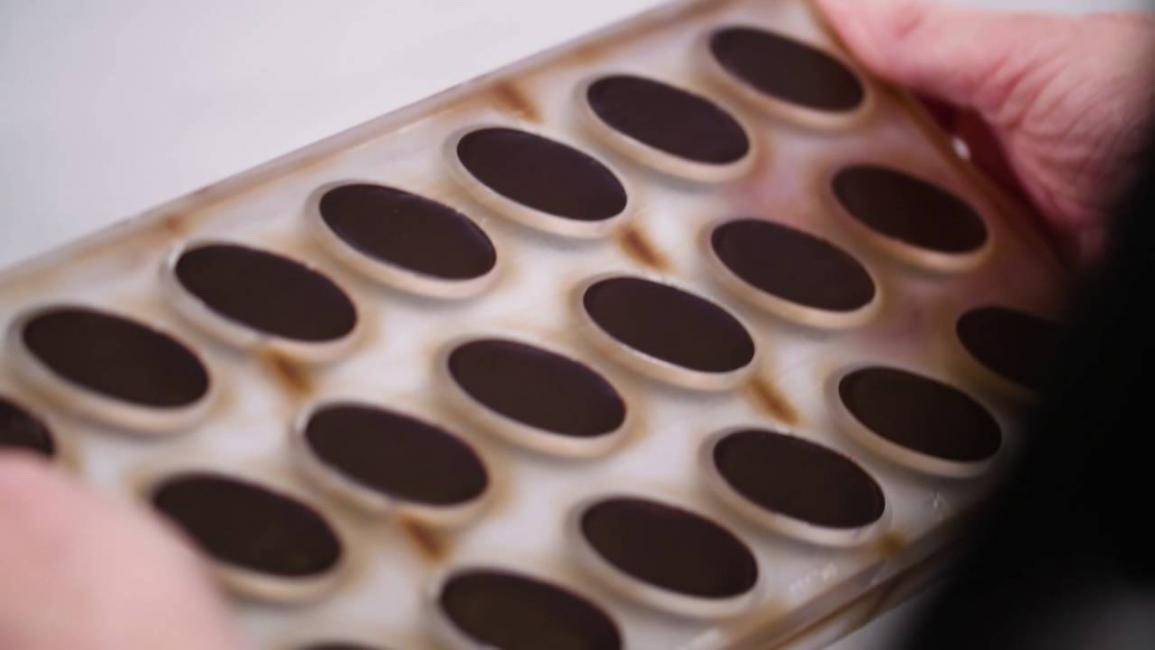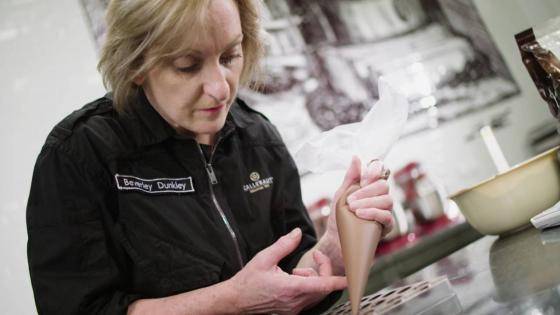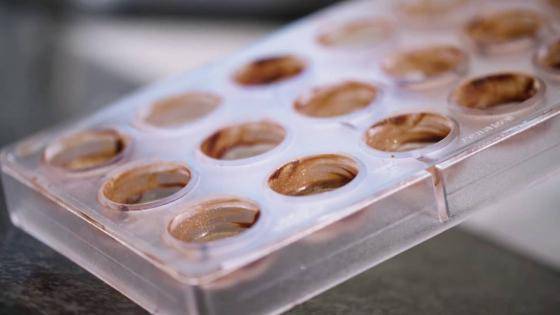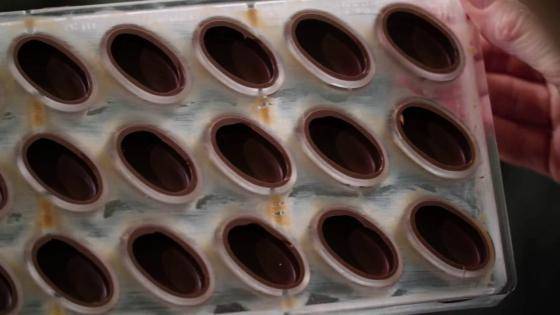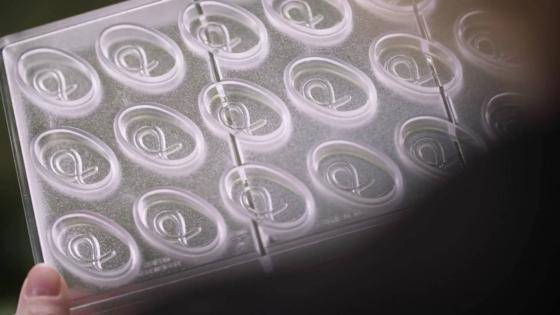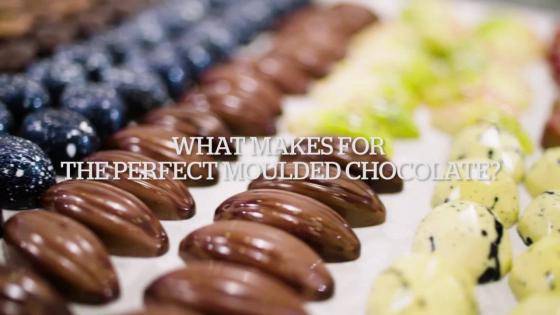Moulded chocolates - Sealing moulded chocolates
The most important thing about sealing moulded chocolates is making sure they don’t leak. Here’s what you should pay attention to when cooling them and taking them out of the mould.
GOOD TO KNOW
What should you take to heart when making moulded chocolates?
Use polycarbonate moulds. These yield the best gloss and contract slower than chocolate, making unmoulding far easier.
Choose a fluid chocolate: a three-drop or four-drop fluidity is ideal.
Heat the moulds briefly before pouring in your chocolate. This way, you’ll avoid temperature shocks that could make your chocolate turn grey afterwards.
Make sure that your filling is smooth and fluid enough to pipe easily. Also check that it isn’t warmer than 28°C, otherwise the filling will make your chocolate shells melt.
Try to avoid making smudges on the rims of your chocolate moulds with the filling as they may cause leaks in your chocolate shells. Always fill each chocolate shell individually.
Never fill the chocolate shells to the brim. Leave a 1.5-mm opening from the top, otherwise it would be impossible to seal your chocolates properly.
Needed:
- Filled chocolate shells for chocolates (crystallised and still in the mould)
- A ladle
- Chocolate melter or tempering machine
- A small palette knife
- A chocolate scraper
- Tempered chocolate
- Gloves
Step 1
Use a heat gun to warm the top of your mould very briefly.
Step 2
Apply a small quantity of tempered chocolate on top and spread it out evenly. Do this bit by bit rather than pouring too much chocolate into the mould at once.
Step 3
Smooth over the top and scrape off any excess chocolate from the top and sides of the mould.
Step 4
Tap the mould firmly against your worktop to remove any air bubbles from the chocolate and place it in a refrigerator at 14 to 16°C for at least two hours.
Step 5
Take the mould out of the refrigerator and flex it a bit to loosen the chocolates. Then turn it upside down and carefully bang it onto your worktop to release the chocolates onto the paper.
Tip:
Wear gloves when handling your chocolates to avoid smudging them with fingerprints. Ideally, unmould your chocolates on a perfectly clean surface to keep them from attracting dust or tiny chocolate particles, seeing as they are statically charged for a brief period when they come out of the mould.
Which type of chocolate is best suited to create moulded chocolates?
For a medium thick chocolate shell:
All chocolate types with a basic three-drop fluidity are right about perfect. They make it easy to create a chocolate layer with the perfect thickness and minimise the chance of having unwanted air bubbles, especially in comparison with more fluid chocolates.
For a fine chocolate shell:
Some chocolate lovers and craftsmen want the chocolate shell of their moulded chocolates to be as fine and crunchy as possible. A more fluid chocolate with a 2% to 4% higher cocoa butter content is absolutely perfect for this. You can easily recognise these types of chocolate by the four-drop symbol indicated on their packaging.


